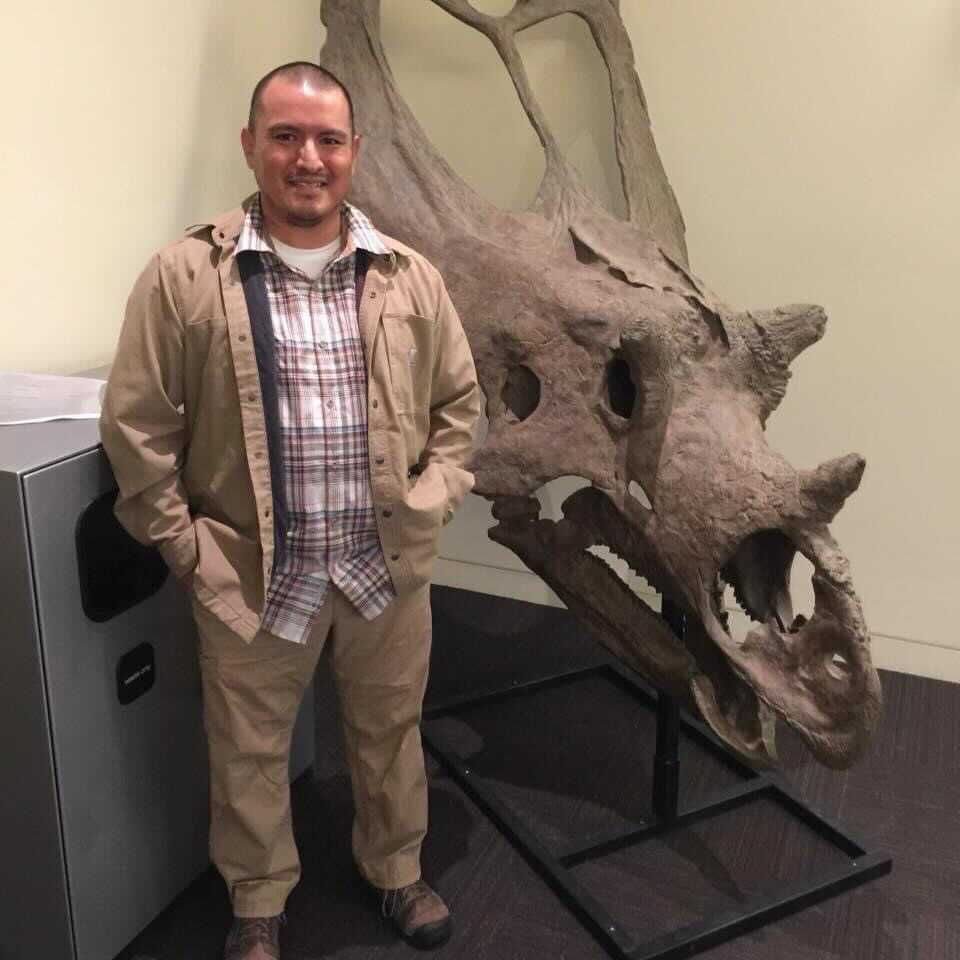Some information may be outdated.
To understand geologic time, you have to stretch your mind across knowledge sets and time scales — exactly what geologist and paleontologist Kevin Madalena has done as he’s worked to understand and defend the fossil record and cultural sites on Indigenous ancestral lands.
This week, Science Moab speaks with Madalena about his thoughts on archaeology. We discuss the connections among his varied interests, the relationship between Western and Indigenous science and perspectives, and how he has crossed these knowledges to understand the deep past and help safeguard the future.
Science Moab: Your expertise spans several disciplines. What have you studied most?
Madalena: A lot of my development as a geologist and paleontologist happened in Utah. I had great mentors and did a very brief stint with the Bureau of Land Management in Moab. I was all over the Mesozoic, the Jurassic, and the Cretaceous eras and also also the periods before the dinosaurs, called the Paleozoic, the Permian, and the Pennsylvanian periods. Eventually, I became more focused on tetrapod evolution, where you see reptiles and amphibians moving onto land; and paleoclimatology, where you can relate your observations on the climate or the fossil record to our contemporary times.
Science Moab: The work you’ve done has spanned fossils and rocks, but also archaeology, conservation, and environmental policy. Can you describe that progression and how those topics connect?
Madalena: As Indigenous people growing up in Jemez Pueblo, we were taught that we are literally born from this planet. As you mature, you begin to pay attention to all these catastrophic ecological phenomena. There’s a saying that as an Indigenous scientist, you have your right foot in academia, and your left foot is in the traditional Indigenous sense. So when both sides of your world are pointing to ecological disasters, you have to utilize both parts of your knowledge.
The one really compelling thing I noticed is that science only deals in absolutes, whereas through the Indigenous aspect, you have some wiggle room for philosophy. There’s not much wiggle room in the hard empirical sciences, but I noticed immediately that any hypotheses can be changed with more empirical data. It took a while to reconcile both parts, but I finally adjusted.
Science Moab: Can you describe your journey from thinking about fossils and rocks moving more towards archaeology?
Madalena: What really compelled me to do a crash course in archaeology and the anthropological sciences was a day in Albuquerque when I decided to go into a hobby store, and the [number of antiquities] was staggering. Where were these commercial collectors getting this stuff? I wondered what the paperwork looked like.
So as I delved more into the sciences, I began to observe the rampant looting of antiquities and fossils. I realized I’d be a better indigenous scientist if I educated myself holistically. I think it made me a better analytical scientist because it made me more well-rounded. You have to expand on your education so you can meet the black market and commercial collectors on a level playing field.
Science Moab: Could you expand on the looting? What does it mean, both scientifically and culturally?
Madalena: It’s an active erasure of Native cultures. The missing and murdered Indigenous women and the violence against Mother Earth also intertwine with the vast looting of our antiquities and fossils. The lack of law enforcement oversight against violence towards Native women needs to be included with the [lack of] oversight of the sciences and conservation of ancestral areas.
Science Moab: What would you like to see as the relationship between Indigenous knowledge and Western science, specifically in regards to land management on the Colorado Plateau?
Madalena: I think my main wish is the [Indigenous] oversight of any data that comes out of Indigenous land. For example, any archaeological papers or narratives coming out of my ancestors’ lands, I think Jemez Pueblo must have a say in what gets published. And rematriation — recently, I began to use the word rematriation instead of repatriation, because historically we were matrilineal — which is the return of sensitive human remains or elements unethically displayed for the public. Tribes should have their own say in what goes in and out.
Science Moab is a nonprofit dedicated to engaging community members and visitors with the science happening in Southeast Utah and the Colorado Plateau. To learn more and listen to the rest of Kevin Madalena’s interview, visit www.sciencemoab.org/radio. This interview has been edited for clarity.
Appreciate the coverage? Help keep local news alive.
Chip in to support the Moab Sun News.





